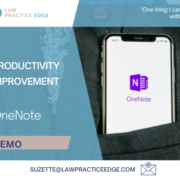As law firms grapple with the complexities of a globalized economy and an ever-changing regulatory landscape, the demand for strategic financial leadership has never been higher. Traditional full-time CFO roles are evolving, and in their place, fractional CFO services are rising to prominence. Today’s modern law firms are leveraging these services to achieve agility, efficiency, and strategic advantage.
The Landscape of Fractional CFO Services
From specialized financial firms to independent consultants, the market for fractional CFO services is broad and diverse. The trend is gaining momentum as law firms recognize the value and flexibility it brings.
Fractional CFO services equip law firms with the seasoned financial leadership that may otherwise be beyond their reach, offering it on a part-time or temporary basis rather than a full-time commitment. Many firms find themselves in a position where their size or budget does not warrant the full-time salary of a veteran financial manager. Consequently, this often leads to an inexperienced staff member being saddled with critical financial responsibilities, despite lacking the essential training and expertise vital to the firm’s success. The fractional CFO model provides a strategic solution to this challenge. By engaging an experienced financial leader on a fractional basis, the firm gains access to the CFO’s extensive knowledge and skills without incurring the substantial costs associated with a full-time salary and benefits package. This approach unites the profound financial insights of a seasoned executive with the flexibility to respond to evolving business needs, delivering a balanced and highly effective financial management strategy.
Drivers of Fractional CFO Adoption
In an increasingly complex legal landscape, law firms require strategic financial planning and oversight to succeed. The fractional CFO fills a crucial role, aligning financial strategies with legal objectives, overseeing budgeting and forecasting, and providing insightful analysis. Whether navigating a merger, restructuring, or simply looking to optimize financial performance, the fractional CFO can offer tailored support.
Fractional CFOs often bring industry-specific knowledge that can guide law firms through unique challenges and opportunities, ensuring that financial strategies align with legal objectives. For growing or transitional firms, a fractional CFO provides adaptability, allowing the firm to scale financial leadership as needed.
What Services & Benefits Can A Firm Expect?
The scope of services offered by a fractional CFO may vary based on a law firm’s specific needs. Common services include:
• Strategic Financial Planning: Working closely with firm leadership to define and implement long-term financial goals.
• Cash Flow Management: Monitoring and optimizing cash flow to support firm operations and growth.
• Budgeting and Forecasting: Developing realistic and flexible budgets and forecasts to guide decision-making.
• Financial Reporting and Analysis: Providing clear, actionable insights through regular financial reports and analysis.
In addition, the use of fractional CFO services provides several unique advantages to law firms, including:
Agility:
• Adaptation to Change: Fractional CFOs allow law firms to quickly adapt to changing financial landscapes, whether those are market shifts, regulatory updates, or internal transitions.
• Tailored Expertise: Engaging a fractional CFO allows for a customized fit to the firm’s unique needs and strategic direction at any given time.
• Flexibility: With the ability to scale their engagement up or down, fractional CFOs provide law firms the agility to respond to new opportunities or challenges without the constraints of a full-time position.
Efficiency:
• Cost Savings: By using a fractional CFO, law firms can access high-level financial expertise without the full-time salary burden, making it a cost-effective solution.
• Optimized Financial Operations: Fractional CFOs often conduct in-depth financial analysis, streamlining processes and identifying areas where efficiency can be improved. This can lead to more robust financial management without unnecessary complexity or overhead.
• Technology Integration: Many fractional CFOs are adept at leveraging the latest financial technologies and tools, which can lead to significant efficiencies in financial reporting, budgeting, and other essential functions.
Strategic Advantage:
• Strategic Alignment: Fractional CFOs work closely with law firm leadership to ensure that financial strategies align with the firm’s broader business goals, creating a cohesive approach that supports long-term success.
• Specialized Industry Knowledge: Many fractional CFOs offer industry-specific expertise, understanding the unique financial challenges and opportunities within the legal field.
Challenges & Considerations in Adopting Fractional CFO Services
Selecting the right fractional CFO requires careful consideration of the firm’s goals, the specific expertise needed, and the desired level of engagement. Clear communication, alignment with firm values, and a well-defined scope of work are essential to a successful partnership.
Ensuring seamless collaboration between a fractional CFO and the firm’s existing financial team requires clear communication and defined roles. As with any successful relationship, open and honest communication is key.
Handling sensitive financial information necessitates robust security protocols. Trust and transparency must be established from the outset.
What Does This Mean For Your Firm?
In an ever-evolving legal landscape marked by complexity, competition, and regulatory intricacy, law firms must be nimble and strategic in their approach to financial management. The traditional full-time CFO model may no longer offer the flexibility and specialized expertise required to navigate these challenges. Enter the fractional CFO, a transformative solution that has redefined financial leadership within the legal sector.
Partnering with a fractional CFO offers not just a financial advantage but a strategic one. From aligning financial goals with the broader vision of the firm to optimizing cash flow, mitigating risks, and leveraging opportunities for growth, the fractional CFO becomes a vital partner in shaping the firm’s future.
The agility that comes with this model allows law firms to respond to changes in the market or internal transitions with finesse and foresight. It provides the freedom to scale financial expertise up or down as circumstances dictate, ensuring that the right level of guidance is available exactly when and where it’s needed.
Perhaps most compellingly, the fractional CFO brings a level of specialization and industry insight that can be a game-changer for law firms. They offer not just technical skills but strategic thinking, aligning financial planning with the unique dynamics of the legal industry. This depth of understanding can translate into innovative strategies, competitive advantages, and a more robust bottom line.
In summary, the utilization of fractional CFO services represents a modern, flexible, and intelligent approach to financial management in law firms. It’s a model that recognizes the unique demands of today’s legal practice and responds with a solution that is both practical and visionary. In leveraging the expertise of a fractional CFO, law firms are not merely adapting to change; they are positioning themselves at the forefront of a new era of legal financial leadership, poised for success in a complex world. The fractional CFO is not just a service; it’s a strategic partnership, offering law firms the keys to unlock their full financial potential.



















